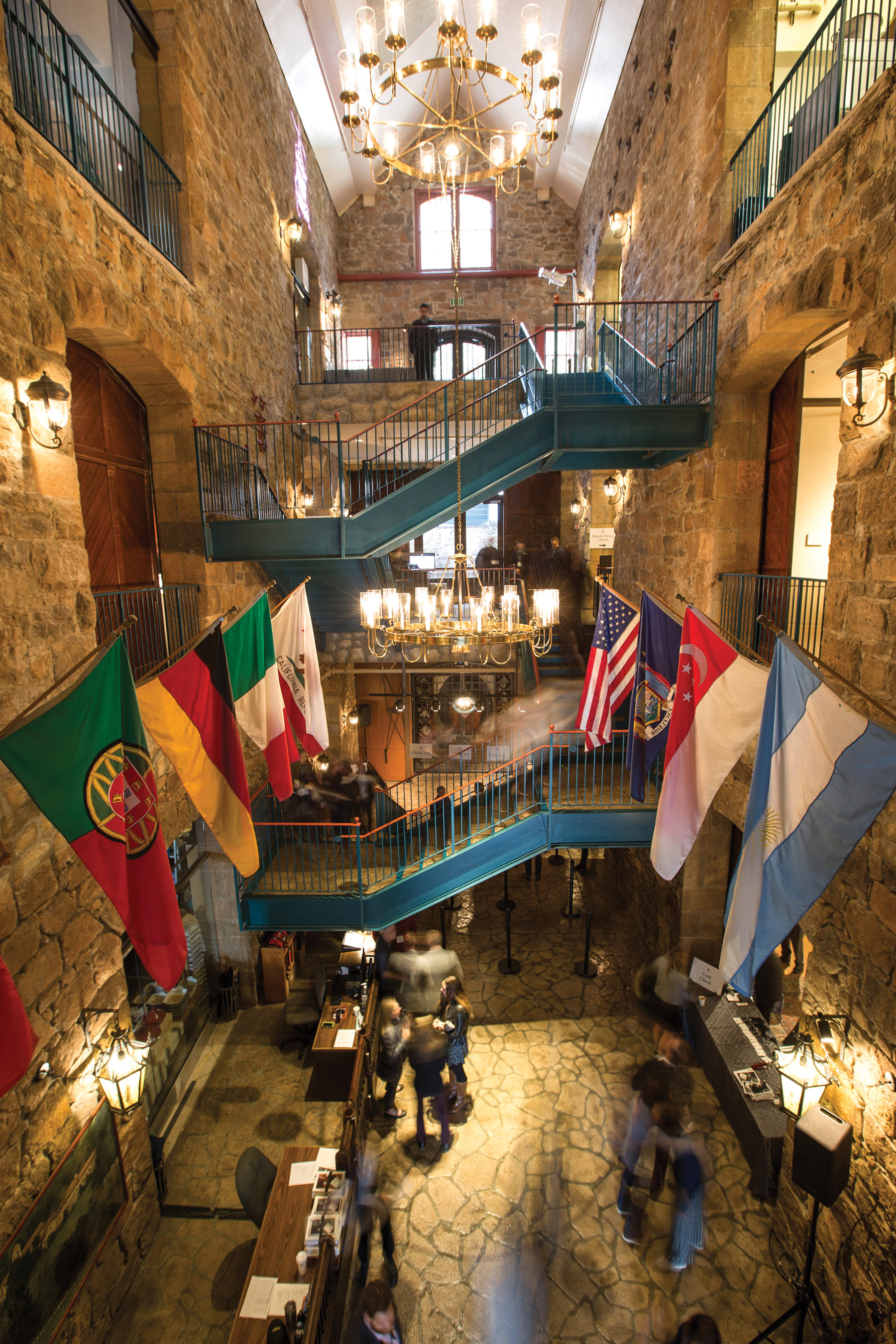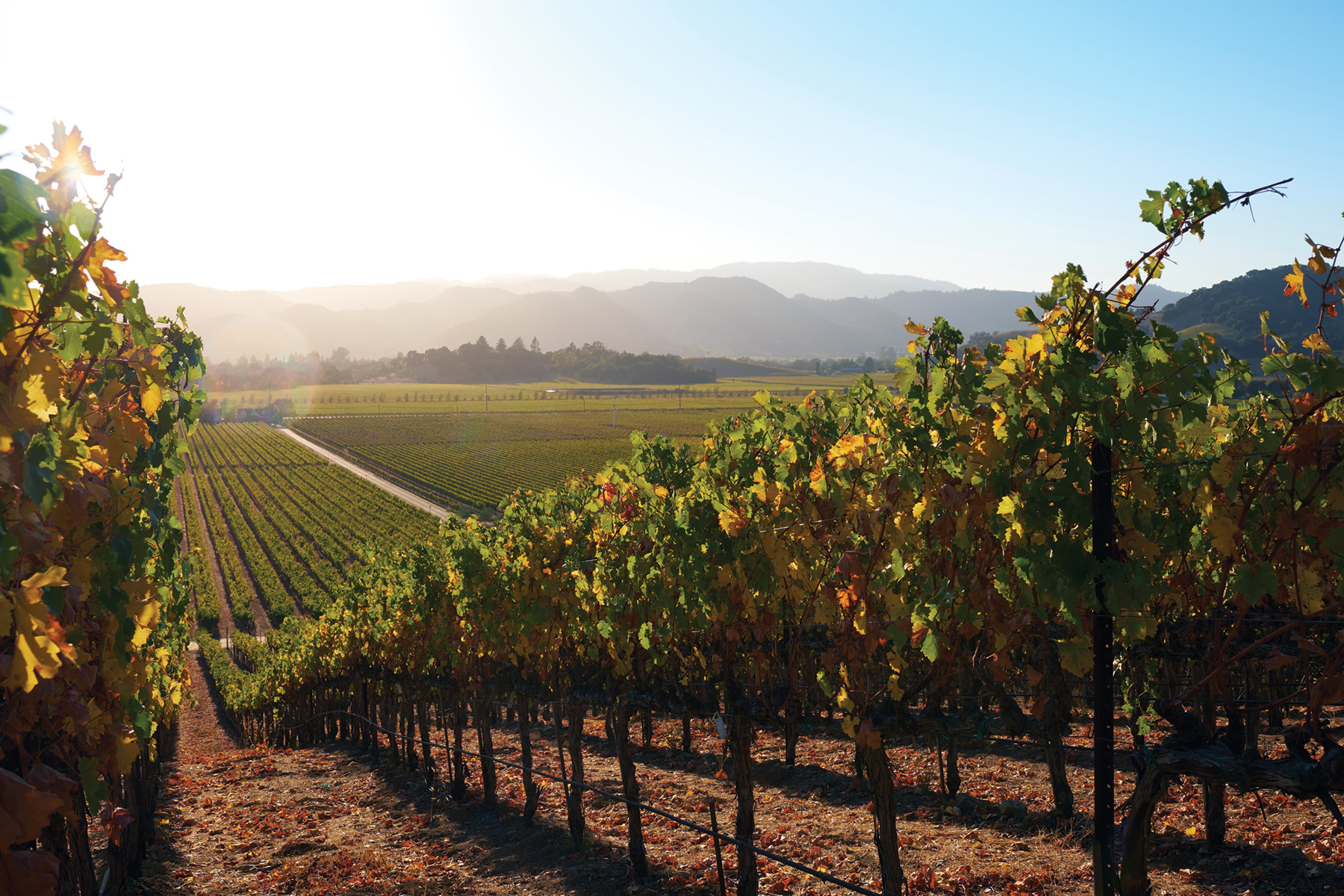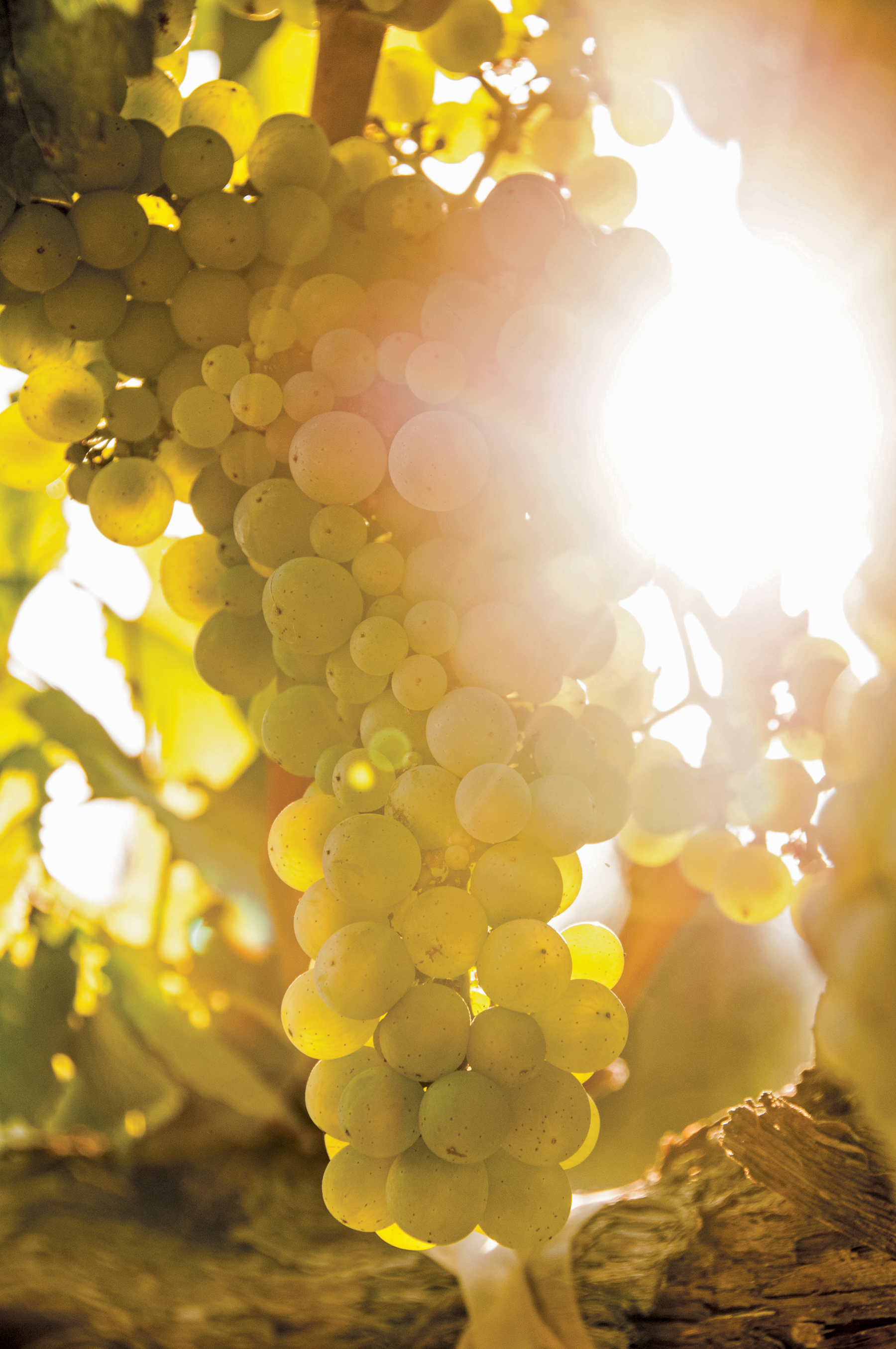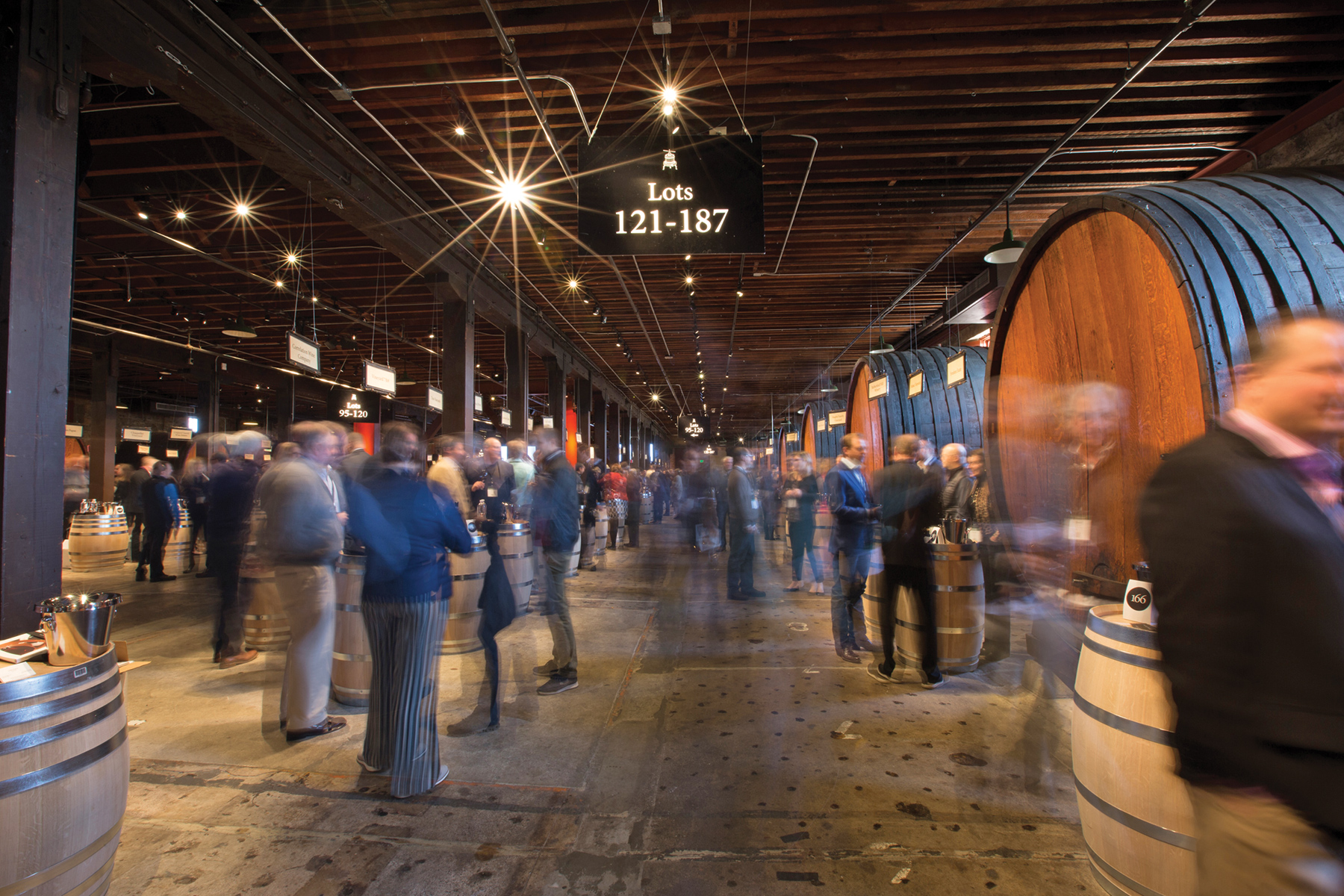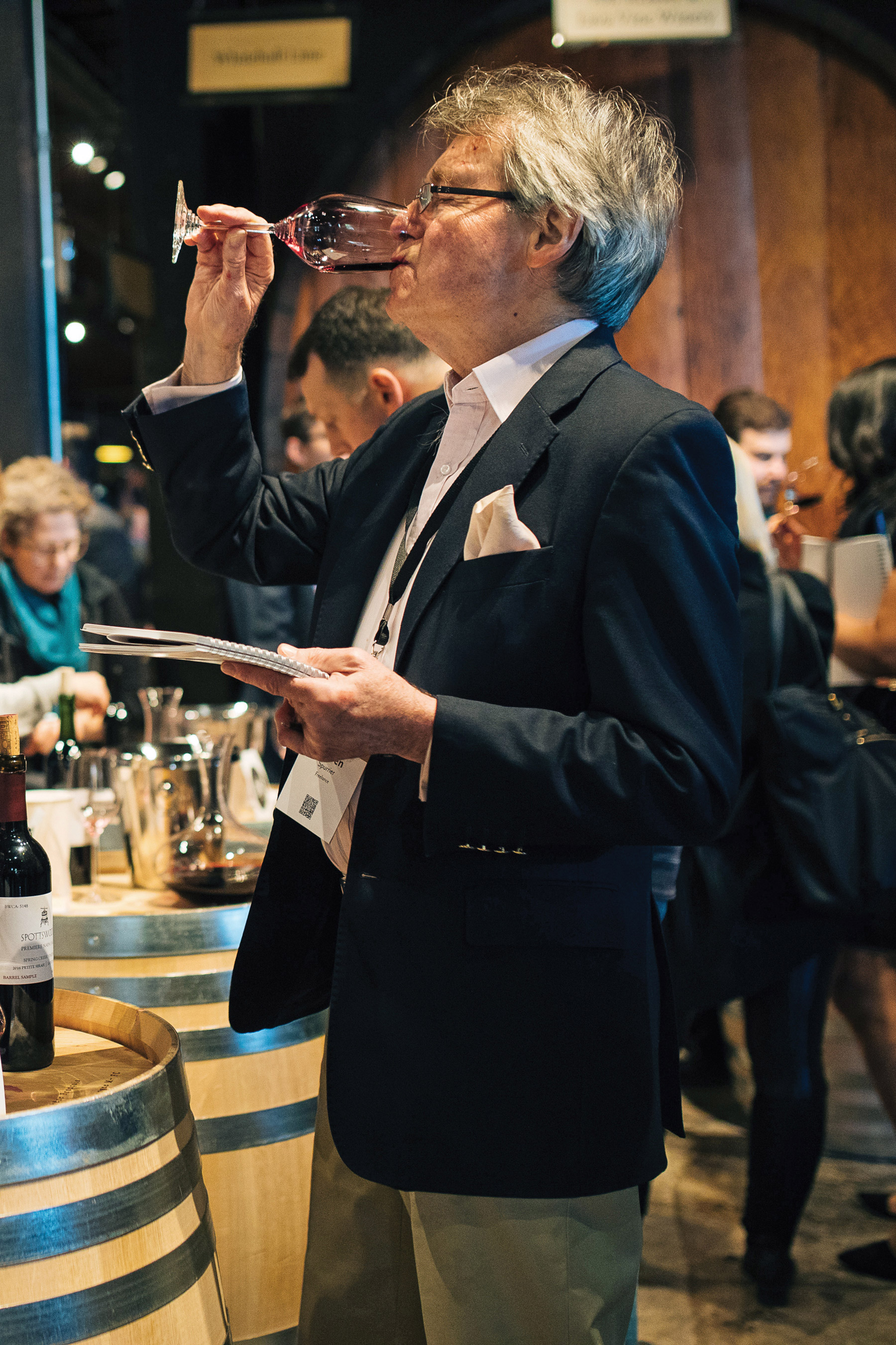Now more than a year since the devastating wildfires in Northern California’s Napa Valley, it’s business as usual in this beloved wine region. Known for its full-bodied cabernets and fruity merlots, Napa Valley is recovering from disaster by nurturing its community- building efforts, two of which are major annual fundraisers — Premiere Napa Valley, a by-invitation-only event in February that supports the local wine industry, and Auction Napa Valley, which promotes local health and educational programs.
I was among the media that covered Premiere Napa Valley in 2018, the auction’s 22nd year. Hosted every February by the Culinary Institute of America (CIA), the event is a magnet for the local and global who’s who in the wine industry. It brought in hundreds of wine pros, who feasted on a pre-auction buffet lunch of poached salmon and porchetta — a power kitchen party held in the high-ceilinged, wood-beamed massive tasting kitchen of CIA’s genteel Greystone branch campus in St. Helena. Wine-expert attendees included sommeliers across the U.S., from Texas to Oklahoma, and a wine director from a luxury hotel in Shanghai, all pleased to rub shoulders with Napa winery owners milling along gleaming stainless steel countertops laid out with a candy store’s worth of petits fours amid giant tubs of ice-cold whites and rosés.
There to fuel up before placing bids at the “futures” auction to help define the future of Napa, the oenophiles in attendance got exclusive tastings of next-generation wines straight from the barrel. As soon as the auction started, paddles came out flying. The first lot, a 2016 vintage from the Hourglass winery, triggered a bidding frenzy, with a single barrel going for $60,000 — or $1,000 a bottle. Perhaps, the fervour had something to do with the fact that Hourglass founder and CEO, Jeff Smith, was chair of the auction’s steering committee.
For buyers, the cachet is in the access to exclusive wines, rolling the dice on their outcome and, in some cases, collaborating with the winemakers on blending, finishing and custom-bottling.
Although I didn’t have the credentials to place a bid, I did have the opportunity to sample wines, including a muscular cabernet sauvignon with enough acidity, tannin and structure, ideal for bottle aging for years to come. “If it’s for a special occasion, we can bottle it in magnums or even in larger [quantities],” Pauline Lhote explained to me, as I tasted Domaine Chandon Brut’s creamy, toasty 2008 vintage. Lhote, who was born in Champagne, France, is the sparkling wine brand’s director of winemaking.
At events like Premiere Napa Valley, local wineries can take advantage of some of the most influential local and international palates to test experimental small lots of new styles. For example, Jason Chang, proprietor of the winery Nine Suns in St. Helena, took a chance on a young, vibrantly purple and perfumey grenache — a rogue varietal that had tongues wagging in a wine region where cabernet is still king.
The outcome of the 2018 auction of 217 lots raised $4.1 million — evidence of not just Napa Valley affluence but also of support for the rejuvenation of the region. The event was also a major fundraiser for the nonprofit Napa Valley Vintners (NVV), which pumps resources back into the industry. NVV notably kicked into high gear in October 2017, when wildfires caused chaos at the tail end of the year’s harvest. “We made our first grants about five days after the fires,” Patsy McGaughy, NVV’s communications director, told me. That swift collaboration with non-profit partners helped fund urgent temporary accommodations for workers and resources for local wineries. “Within two or three weeks, we were holding information sessions for our members on everything, from legal [matters] and insurance to labour implications,” she pointed out.
Grapevine damage and long-term effects, such as “smoke taint,” on 2017 vintages, as well as damage to warehoused barrels, could take a year or more to assess. But there was good news, some of it less dire than media reports at the time. “Not to diminish impacts, but less than eight percent of Napa vineyards were in the fire zone, and only 10 Napa wineries had significant damage,” McGaughy noted. Approximately 100 more sustained some damage, she said.
As I drove through Napa Valley in the dormant late-winter season of 2018, my eyes tracked the random path of the fires that swept the region — a bare field completely devoid of ground cover, blackened vine stumps on one side of Route 128 but none on the other side. I also saw how incredibly close the fires were to roads, businesses and towns.
Sturdy old grapevines are known to make good firebreaks, yet the blaze managed to creep up on the sole unplanted patch at Signorello Estate, the hilltop winery of Ray Signorello Jr. on Silverado Trail. Signorello, who was born in San Francisco and raised in Canada, was at his home in Vancouver at the time of the fires and, thankfully, his family and staff were safe. The winery’s barrel-storage room was also intact, as were the grapevines, which are among the oldest in Napa. His late father’s vintage yellow Cadillac was spared as well, which he interprets as a positive sign. However, his residence in Napa and a vine-covered shed that was the winery’s elegant European-style wine- and food-tasting venue burned down.
“I’m fortunate [that] all these good things have happened out of bad things,” said Signorello, who had already harvested his 2017 vintage when the fires broke out. A temporary tasting facility opened on-site this past July, with completion of the new building anticipated in three years.
Meanwhile, Signorello has been assembling “a dream team” that will mitigate future threats on the site, including better delivery systems for natural water, earthquake- resistant buildings and wine caves, plus the custom-designed tasting facility. “Now I get to create the best culinary and wine experience there is in Napa Valley,” he said. “If I had built that 30 years ago, I wouldn’t have known everything I do now.”
It’s this level of optimism, passion and commitment that all wine lovers can raise a glass to.
By Charlene Rooke – *This article originally appeared in INSIGHT: The Art of Living | Winter 2018
Photography by: Alexander Rubin/Napa Valley Vinters; Napa Valley Tourism;



